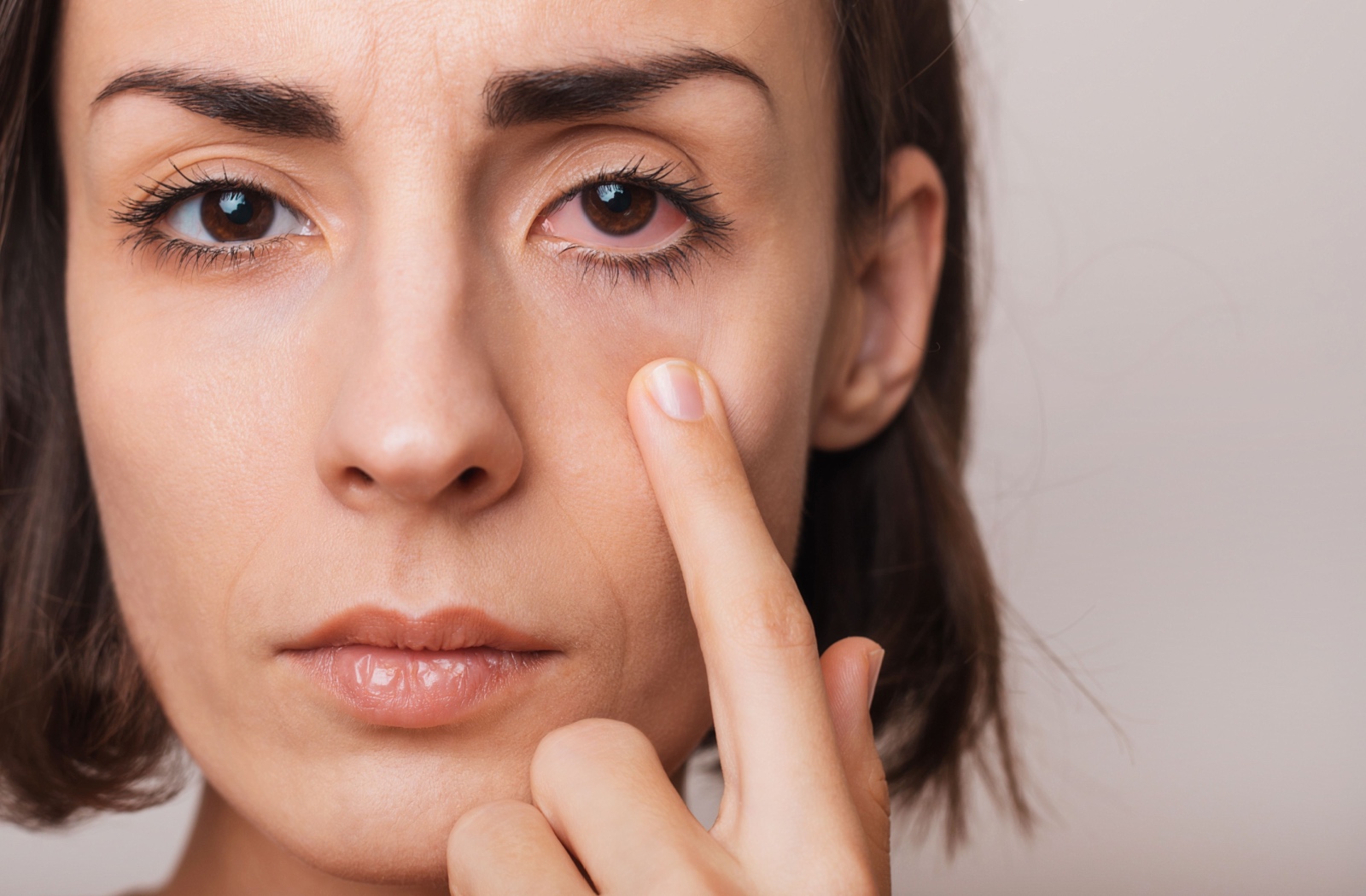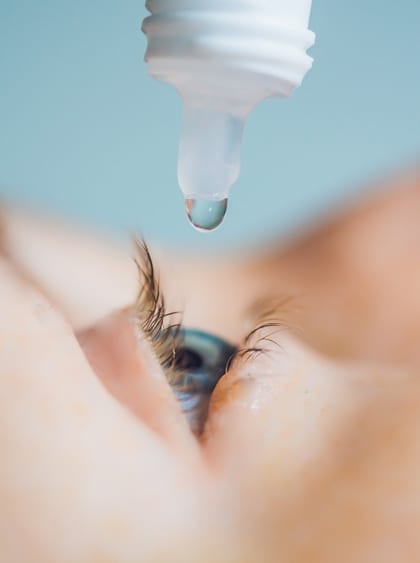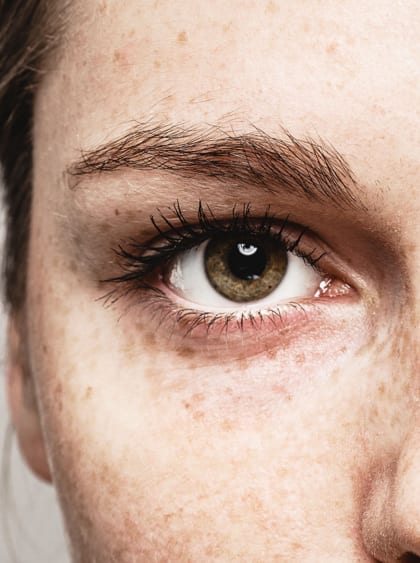Irritated eyes are often characterized by the whites of our eyes turning pink. Some may use “pink eye” as an umbrella term for anything that causes the eye to appear red, pink, and discoloured. However, the distinction between symptoms, and causes, is key for determining an accurate diagnosis for eye conditions.
In terms of eye health, pink eye (conjunctivitis) isn’t an umbrella term for eye irritation. Several eye conditions can produce symptoms similar to conjunctivitis, including:
- Blepharitis
- Dry Eyes
- Keratitis
- Styes
- and other less common conditions
What is Pink Eye?
Pink eye, also known as conjunctivitis, is characterized by the eye’s surface turning pink. This happens when the conjunctiva, the thin layer covering the white part of the eye and inner eyelid becomes inflamed.
Pink eye is common, and can occur in individuals of all ages, but is most common in children. Viral and bacterial pink eye can be highly contagious. Children are often in close contact with one another in schools, daycare, and extracurricular activities, and also have the habit of rubbing their eyes and not thoroughly washing their hands. All of these factors promote the spread of pink eye.
There are three main types of pink eye. Determining the type of pink eye helps in effective treatment, as each form requires a different approach.
- Viral: This is caused by the same virus associated with the common cold and upper respiratory tract infections. Symptoms include red eyes, itching, burning sensation, and watery discharge.
- Bacterial: This is more common in children than adults. Symptoms include painful and sore red eyes, yellow or green sticky pus, and little to no discharge.
- Allergic: Allergens like pollen, dander, smoke, or chlorine can trigger an allergic reaction and cause allergic conjunctivitis. Symptoms include itchy, red, and watery eyes, and can cause the eyelids to become swollen and puffy.
Typical symptoms of pink eye include:
- Pink or red discolouration of the eye
- Itching, irritation, or burning of the eye
- White or green sticky discharge
- Watery eyes
- Swollen eyelids
- Light sensitivity
Diagnosing the form of conjunctivitis by your optometrist helps determine the appropriate treatment. Bacterial conjunctivitis is often treated with antibiotic eye drops, while viral conjunctivitis usually resolves on its own. Allergic conjunctivitis usually improves by removing the allergen from an individual’s environment.
Artificial tears, warm compress, and practicing good hygiene like frequently washing your hands and avoiding cross-contamination help reduce the spread of the infection and promote healing.
In cases concerning chronic conjunctivitis where an individual is not responding to treatment, your optometrist may order cultures of conjunctival tissue and any discharge for additional testing.
While pink eye is generally not serious, it can lead to complications if left untreated, such as corneal inflammation and vision problems. It’s necessary to identify and treat the condition promptly to avoid long-term effects.
Misdiagnosis of pink eye is common due to its similarity in symptoms with other eye conditions. Accurate diagnosis is vital as it ensures effective treatment and long-term relief. Mistaking another eye condition for pink eye can lead to improper treatment and prolonged discomfort.
Eye Conditions That Can Be Misdiagnosed For Pink Eye
The pink discolouration of the eye’s surface can lead individuals to mistake other eye conditions for pink eye. This pink discolouration is not unique to pink eye. Additional symptoms can manifest in other eye conditions which help differentiate the diagnosis from conjunctivitis.
Visiting your eye doctor for an accurate diagnosis on the onset of any of these symptoms will provide you with the most suitable treatment for your specific eye condition.
Blepharitis
Blepharitis is an inflammation of the eyelids, typically where the eyelashes grow. It can cause redness, itching, and swelling, making it easy to mistake for pink eye.
Blepharitis and conjunctivitis share many overlapping symptoms, making it easy to confuse the two conditions. Both can cause redness and swelling around the eyes, as well as irritation and a burning sensation. The presence of crusting around the eyes in the morning is another common symptom found in both conditions.
Blepharitis is generally more focused along the eyelids and is often accompanied by dandruff-like flaking of the skin around the eyelashes, whereas conjunctivitis affects the conjunctiva and is more likely to involve discharge.
Dry Eyes
Dry eyes are a common eye condition that occurs when the eye doesn’t produce enough tears to keep the eye’s surface hydrated or when tears evaporate too quickly because of an unstable tear film.
This condition is characterized by dryness, making it unique from pink eye. Dry eyes are accompanied by redness, watery eyes, and a burning sensation, all of which are common in conjunctivitis.
Dry eyes are a chronic condition that comes and goes gradually and can be managed with advanced therapies and home remedies, while conjunctivitis appears suddenly.
Keratitis
Keratitis, including infiltrates or a corneal ulcer, is caused by the inflammation of the cornea, often due to irritation, infection or injury. Symptoms include redness, pain, tearing, and blurred vision, closely mimicking those of pink eye. However, keratitis can be more severe and may lead to vision loss if not treated promptly.
Keratitis and conjunctivitis can cause redness, pain, and tearing in the eyes, sensitivity to light, and blurred vision. However, keratitis typically involves more intense pain and a sensation of something being lodged in the eye, whereas conjunctivitis often includes discharge that forms into a crust.
Styes
A stye is a red, painful lump near the edge of the eyelid, caused by an infected oil gland. It resembles a pimple and can cause redness and swelling, similar to pink eye. Unlike pink eye, which affects the conjunctiva, a stye is a localized infection of the oil glands in the eyelid and is often accompanied by a small, pus-filled bump.
A stye and conjunctivitis share overlapping symptoms. Both conditions can cause significant redness and swelling around the eye, and excessive tearing, leading to a similar appearance. The pain and irritation associated with a stye can mimic the discomfort felt with pink eye.
Treatments for each condition are different, treating a stye typically involves warm compresses and sometimes antibiotic ointments.
Schedule an Appointment
Understanding the differences between pink eye and other eye conditions is vital for appropriate treatment. Visiting your optometrist for an accurate diagnosis is key for effective treatment, long-term relief, and preventing complications.
Connect with our team at MEye Health to schedule a visit.






















